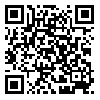جستجو در:
مقالات پذیرفته شده در نوبت انتشار
برگشت به فهرست مقالات |
برگشت به فهرست نسخه ها
سمیه مدیری*  1، عیسی متقی زاده2
1، عیسی متقی زاده2 
 1، عیسی متقی زاده2
1، عیسی متقی زاده2 
1- دکتری زبان و ادبیات عربی، دانشگاه خوارزمی ، s.modiri68@gmail.com
2- استاد گروه زبان و ادبیات عربی دانشگاه تربیت مدرس
2- استاد گروه زبان و ادبیات عربی دانشگاه تربیت مدرس
چکیده: (212 مشاهده)
Authorship Attribution is an application of stylometry that assigns authors to anonymous texts based on writing features. Several models have been developed for languages, such as English, Chinese, and Dutch. Although many studies address authorship attribution in Arabic, most of them do not critically assess whether the applied theories and techniques fit Arabic’s unique linguistic features. This study aims to identify the most suitable techniques for Arabic authorship attribution by evaluating computational theories and artificial intelligence methods. Using a descriptive-analytical methodology, it reviews and compares empirical studies on Arabic texts, including literary and online materials. Data were collected from published studies, experiments, and corpora applying authorship attribution to Arabic, focusing on method effectiveness relative to Arabic’s structural features. Results show that among computational theories, only the K equation reliably determines Arabic text authorship. Among AI’s Machine Learning methods, SVM outperforms KNN, AdaBoost, and Naïve Bayes, but the master-slave technique performs significantly better. In NLP approaches, ARBERT and AraELECTRA achieve up to 96% accuracy, with POS tagging outperforming LSA. Further research is needed to determine the most accurate technique for Arabic authorship attribution.
واژههای کلیدی: Authorship Attribution (AA)، Computational Theory، Artificial Intelligence (AI) Technique، Arabic Text
نوع مقاله: مقالات علمی پژوهشی |
موضوع مقاله:
زبان شناسی
ارسال پیام به نویسنده مسئول
| بازنشر اطلاعات | |
 |
این مقاله تحت شرایط Creative Commons Attribution-NonCommercial 4.0 International License قابل بازنشر است. |





